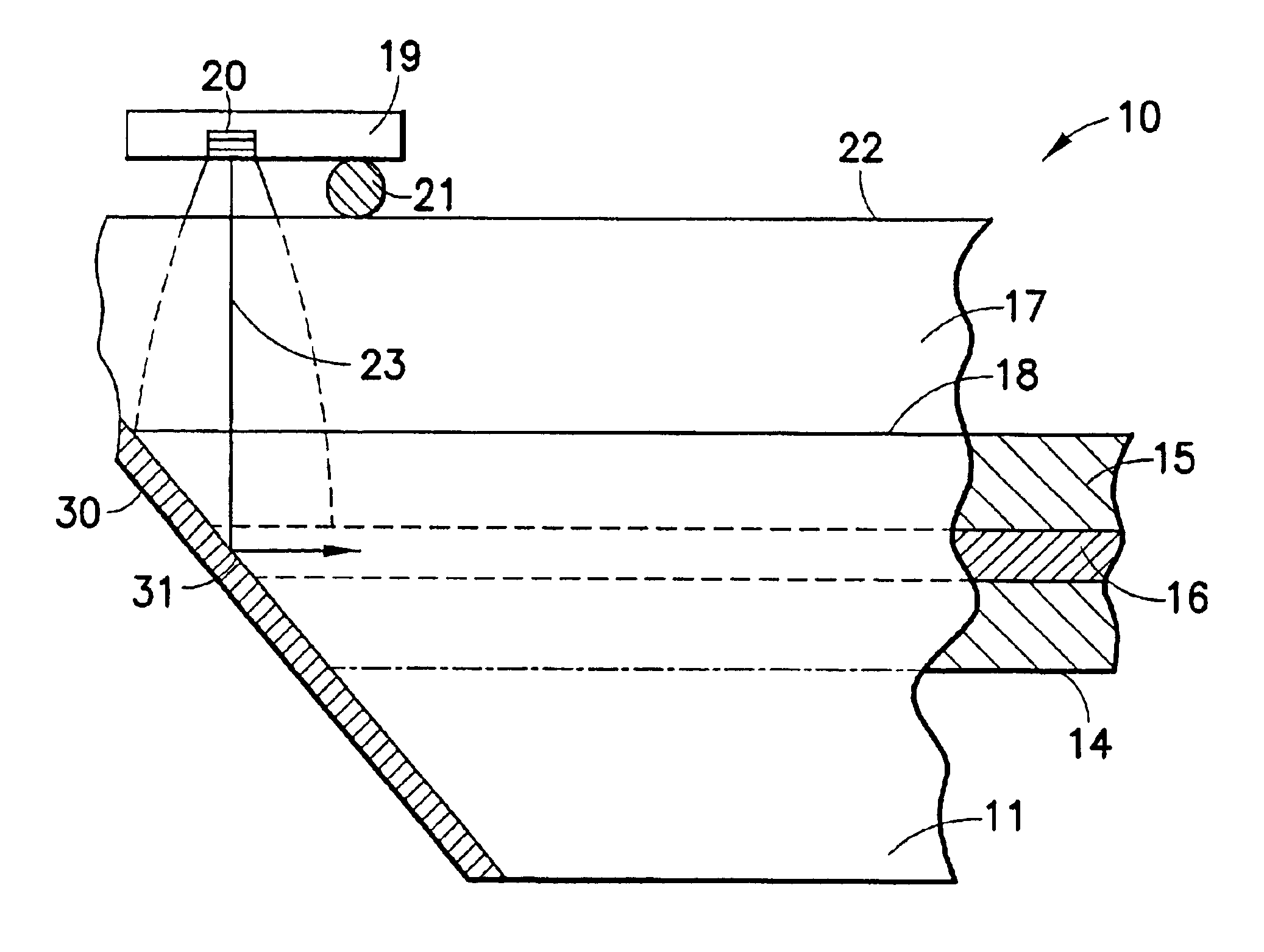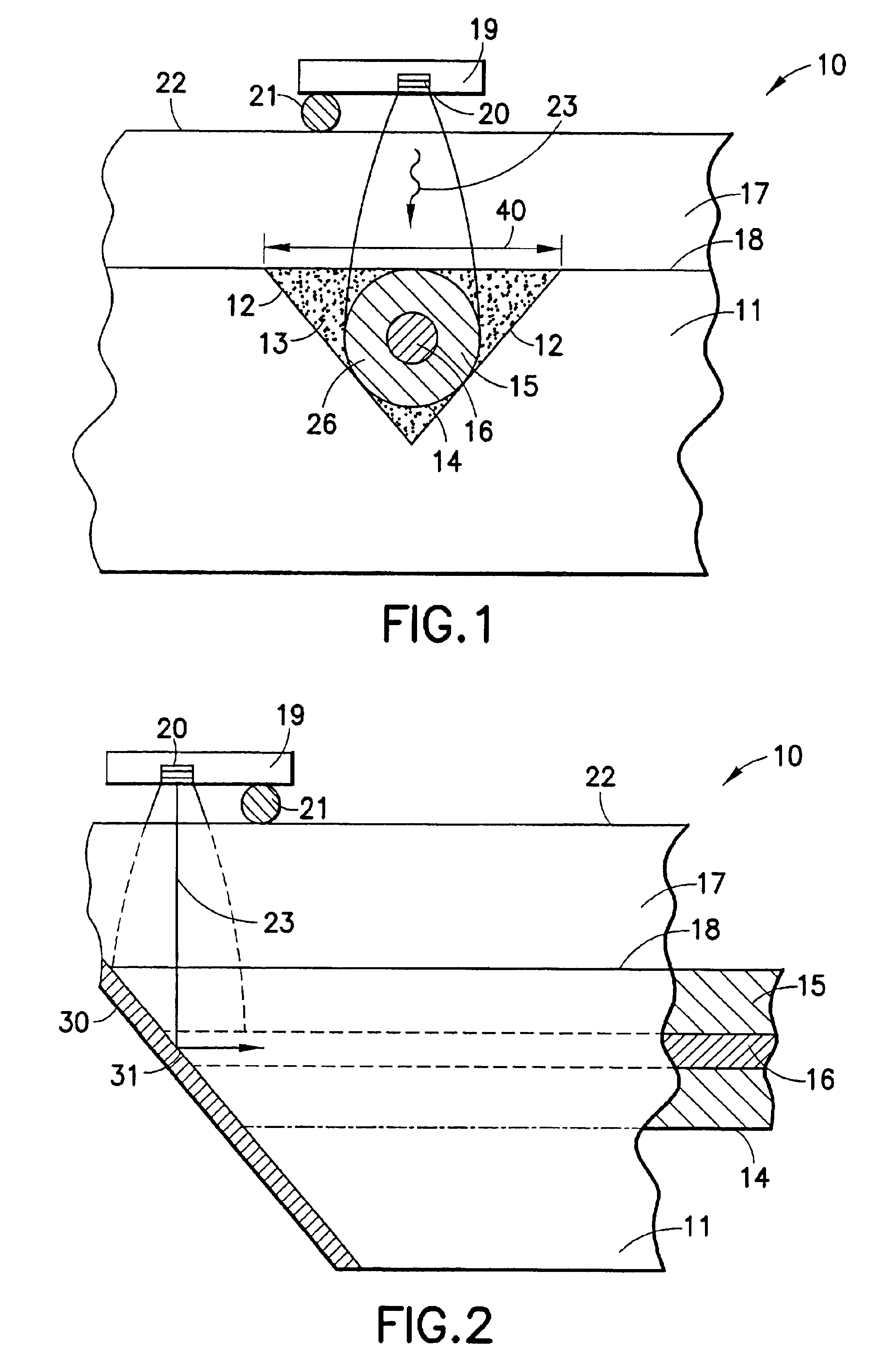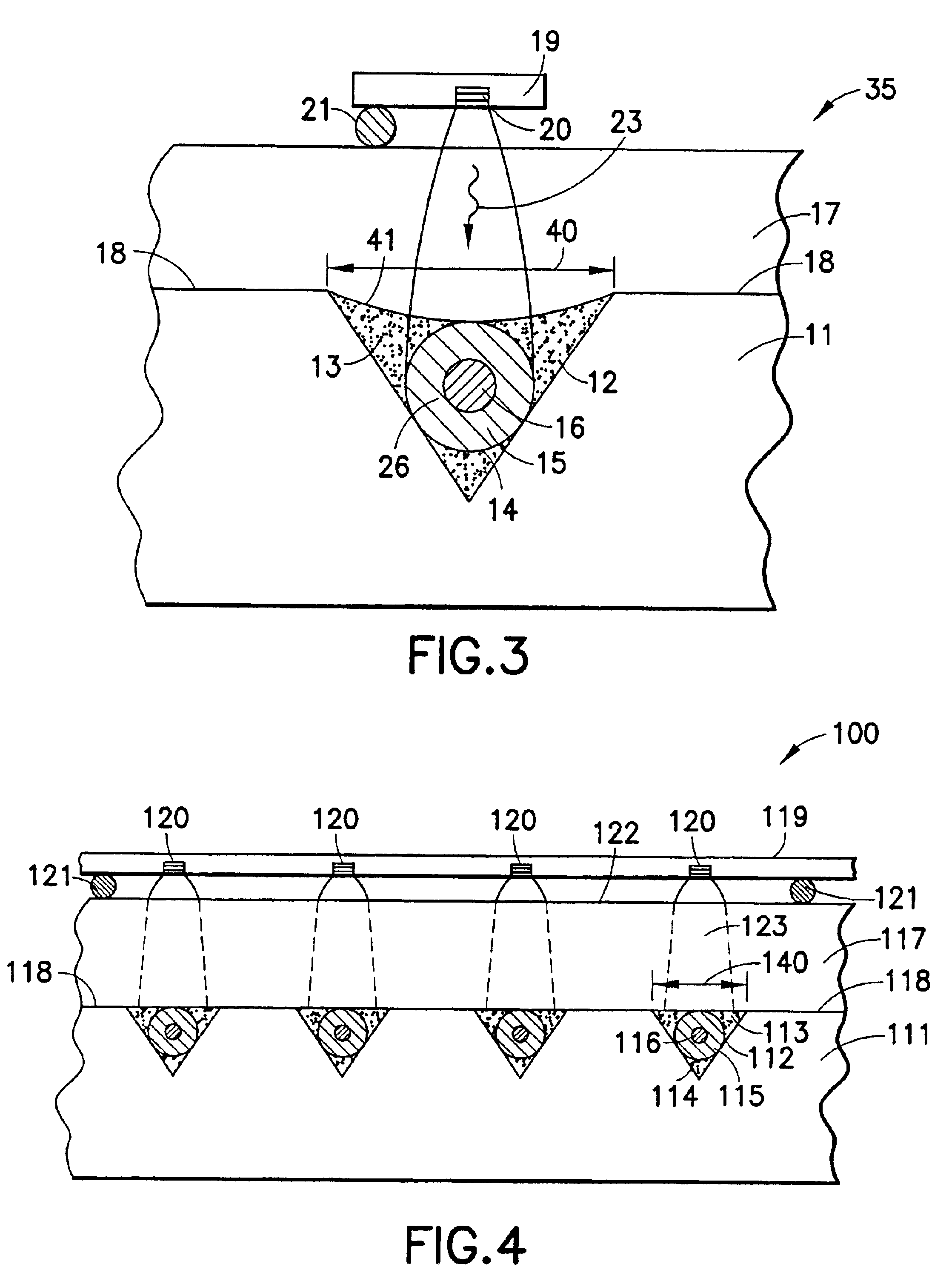Coupled optical and optoelectronic devices, and method of making the same
a technology of optical and optoelectronic devices and coupling devices, which is applied in the direction of optical waveguide light guides, optical elements, instruments, etc., can solve the problems of spherical lens chromatic aberration, and no other approach can compare with the high device densities and high yield, so as to achieve the effect of being easily manufactured and not sacrificing speed and power performan
- Summary
- Abstract
- Description
- Claims
- Application Information
AI Technical Summary
Benefits of technology
Problems solved by technology
Method used
Image
Examples
Embodiment Construction
Integration of silicon and optoelectronic devices on a common insulating transparent substrate requires that an effective method for forming silicon CMOS devices on the transparent, insulating substrate be used. It has been found that high quality silicon films suitable for demanding device applications can be fabricated on sapphire substrates by a method that involves epitaxial deposition of a silicon layer on a sapphire substrate, low temperature ion implant to form a buried amorphous region in the silicon layer, and annealing the composite at temperatures below about 950° C.
Examples of and methods for making such silicon-on-sapphire devices are described in U.S. Pat. No. 5,416,043 (“Minimum charge FET fabricated on an ultrathin silicon on sapphire wafer”); U.S. Pat. No. 5,492,857 (“High-frequency wireless communication system on a single ultrathin silicon on sapphire chip”); U.S. Pat. No. 5,572,040 (“High-frequency wireless communication system on a single ultrathin silicon on sa...
PUM
 Login to View More
Login to View More Abstract
Description
Claims
Application Information
 Login to View More
Login to View More - R&D
- Intellectual Property
- Life Sciences
- Materials
- Tech Scout
- Unparalleled Data Quality
- Higher Quality Content
- 60% Fewer Hallucinations
Browse by: Latest US Patents, China's latest patents, Technical Efficacy Thesaurus, Application Domain, Technology Topic, Popular Technical Reports.
© 2025 PatSnap. All rights reserved.Legal|Privacy policy|Modern Slavery Act Transparency Statement|Sitemap|About US| Contact US: help@patsnap.com



